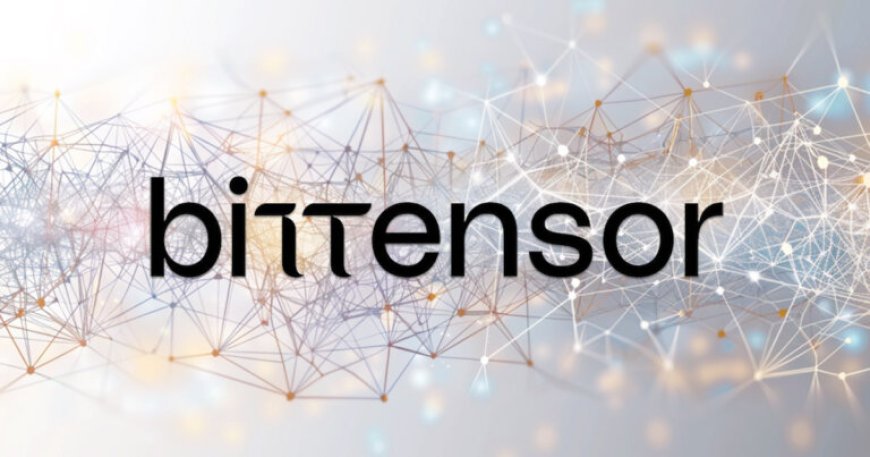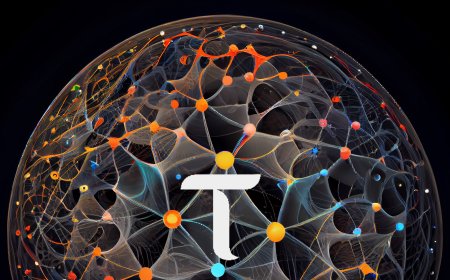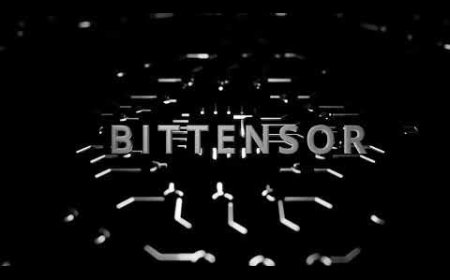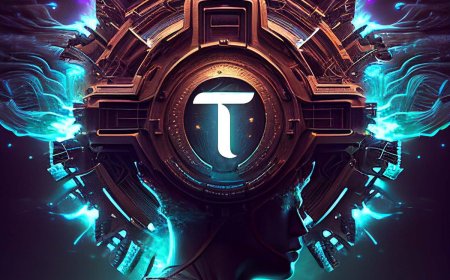Exploring the Future of Decentralized Machine Intelligence with BitTensor: A Step Towards Neural Internet
The future of artificial intelligence (AI) and machine intelligence is evolving rapidly, and BitTensor is paving the way for decentralized, accessible solutions that leverage cutting-edge technology. The core idea is simple yet profound: empower developers and businesses to build decentralized applications (dApps) on a fully decentralized platform where machine intelligence thrives.

This article delves into the journey of BitTensor, from its conception to the introduction of advanced functionalities such as Finney, ChatTensor, and the Nakamoto sub-network, as well as their role in shaping the future of AI.
BitTensor’s Origins: The Birth of a Vision
BitTensor emerged from a pivotal moment in December, coinciding with the Neural Information Processing Systems conference and the release of ChatGPT. At that time, the idea of creating an open-source version of an AI model like ChatGPT started to take root. While this seemed straightforward at first, the complexities quickly became apparent.
Within the first few weeks, a well-aligned model was created—originally intended as a research project. However, when it was presented to the community, the enthusiasm it garnered pushed the team to continue refining it. This led to the establishment of key principles that now define BitTensor. Fast forward to today, and BitTensor has grown into a powerful platform with a dedicated website (chatbenson.com), where users can interact with machine learning models and witness the potential of decentralized machine intelligence firsthand.
The Release of Finney and the Power of Sub-networks
BitTensor’s evolution took a significant step forward with the release of Finney. This innovative feature introduced sub-networks and delegated staking, opening the door for businesses to build powerful applications on the BitTensor platform. With Finney, the BitTensor team demonstrated the possibility of creating sub-networks where validators could stake tokens and manage their validators efficiently.
For businesses and developers, Finney represents the first glimpse of what is achievable with the BitTensor ecosystem. The delegated staking model allows participants to run their own validators, enabling them to gate access to BitTensor’s marketplace of machine intelligence. Access can be controlled via crypto payments or traditional methods, depending on the user’s preference. This flexibility has the potential to drive the growth of decentralized AI-based applications across industries.
ChatTensor and the Promising Future of Prompting Networks
Finney is only the beginning. BitTensor's subsequent development, ChatTensor, serves as a demonstration of the platform’s capabilities, but it goes further by introducing a prompting network. This innovation allows validators to set up their own prompting systems, unlocking unprecedented possibilities for machine intelligence applications. Users will be able to interact with the system in real-time, accessing a marketplace where machine intelligence can process, analyze, and respond to inputs instantaneously.
The prompting network is designed to encompass all forms of machine intelligence—from text, images, audio, and video to next-token prediction. This means that developers can recreate advanced AI functionalities within BitTensor’s decentralized ecosystem, fostering a broader range of applications that can interact with different modalities of data.
One of the most exciting aspects of this network is its potential for interplanetary applications. The BitTensor team has outlined ambitions to expand this technology beyond Earth, envisioning decentralized AI systems that could operate across different planets, paving the way for new forms of communication, data processing, and intelligence sharing.

Decentralized Validators: The Key to Open Access
In BitTensor’s ecosystem, validators play a critical role. Much like Google’s PageRank algorithm indexes web pages to make information searchable and accessible, validators in the BitTensor network provide a similar function. They help make machine intelligence accessible to users by providing front-ends that facilitate interaction with the underlying models.
What sets BitTensor apart from traditional centralized models is its open, permissionless network. Any developer can access the network directly, creating a competitive landscape where no single entity has control over the system. Validators compete to provide the best services, and those that attempt to censor information or limit access will quickly be outperformed by others who maintain an open, transparent service. This ensures that the network remains robust and resilient, continually growing and improving over time.
The economic model of BitTensor incentivizes developers and validators by enabling them to turn their services into sustainable, revenue-generating businesses. For instance, validators can accept payments for their services, much like current platforms such as Perplexity AI, which combines AI-driven intelligence with source-quoting capabilities to provide a seamless experience for users. This creates an opportunity for validators to build strong business models within the decentralized AI landscape.
BitTensor’s Economic Model: Incentivizing Innovation
One of the standout features of BitTensor is its economic model, which not only incentivizes developers but also rewards innovation. As validators create applications on top of BitTensor, they can accept payments from users who wish to access their machine intelligence services. This creates a sustainable economic ecosystem, where developers and validators alike are encouraged to build high-quality, user-friendly applications that meet the needs of businesses and individuals.
The decentralized nature of BitTensor also ensures that applications cannot be censored or controlled by a central authority. Validators who try to restrict access to information will be outcompeted by others, ensuring that the network remains open and accessible to all. This model is in stark contrast to traditional AI platforms, which often operate in closed, centralized environments that limit innovation and competition.
By fostering a competitive landscape and incentivizing development, BitTensor has the potential to become a hub for decentralized AI applications, much like how the early internet (circa 1999) became a hotbed for new, innovative web-based applications.
A Neural Internet for the Future
The broader goal of BitTensor is to create a neural internet—a decentralized network where machine intelligence is easily accessible, much like information on the traditional internet today. This neural internet would enable AI-driven applications to flourish across different industries, from image and audio processing to video analysis and predictive modeling.
BitTensor’s vision aligns with the broader movement towards decentralization, ensuring that no single entity has control over the system. This democratization of machine intelligence has far-reaching implications for the future of AI development, making it possible for smaller developers and businesses to compete on an equal footing with larger, more established entities.
As the platform continues to grow, we can expect to see a wave of new applications built on top of BitTensor, each taking advantage of the decentralized AI model. Whether it’s for decentralized finance (DeFi), machine learning research, or AI-powered consumer applications, the possibilities are limitless.
Conclusion: The Future is Decentralized and Intelligent
BitTensor represents a significant shift in how we approach AI development and deployment. By decentralizing machine intelligence and providing an open, permissionless platform for developers and businesses, BitTensor is empowering a new generation of AI-driven applications that will shape the future of technology.
As we continue to explore the potential of Finney, ChatTensor, and the Nakamoto sub-network, one thing is clear: the future of machine intelligence is decentralized, and BitTensor is leading the charge. Whether you're a developer, business owner, or AI enthusiast, there has never been a better time to get involved in this exciting new ecosystem.
If you’re ready to explore the future of decentralized machine intelligence, head over to chatbenson.com and dive into the demo—because the future of AI starts here.
Source : @The Bittensor Hub.
















